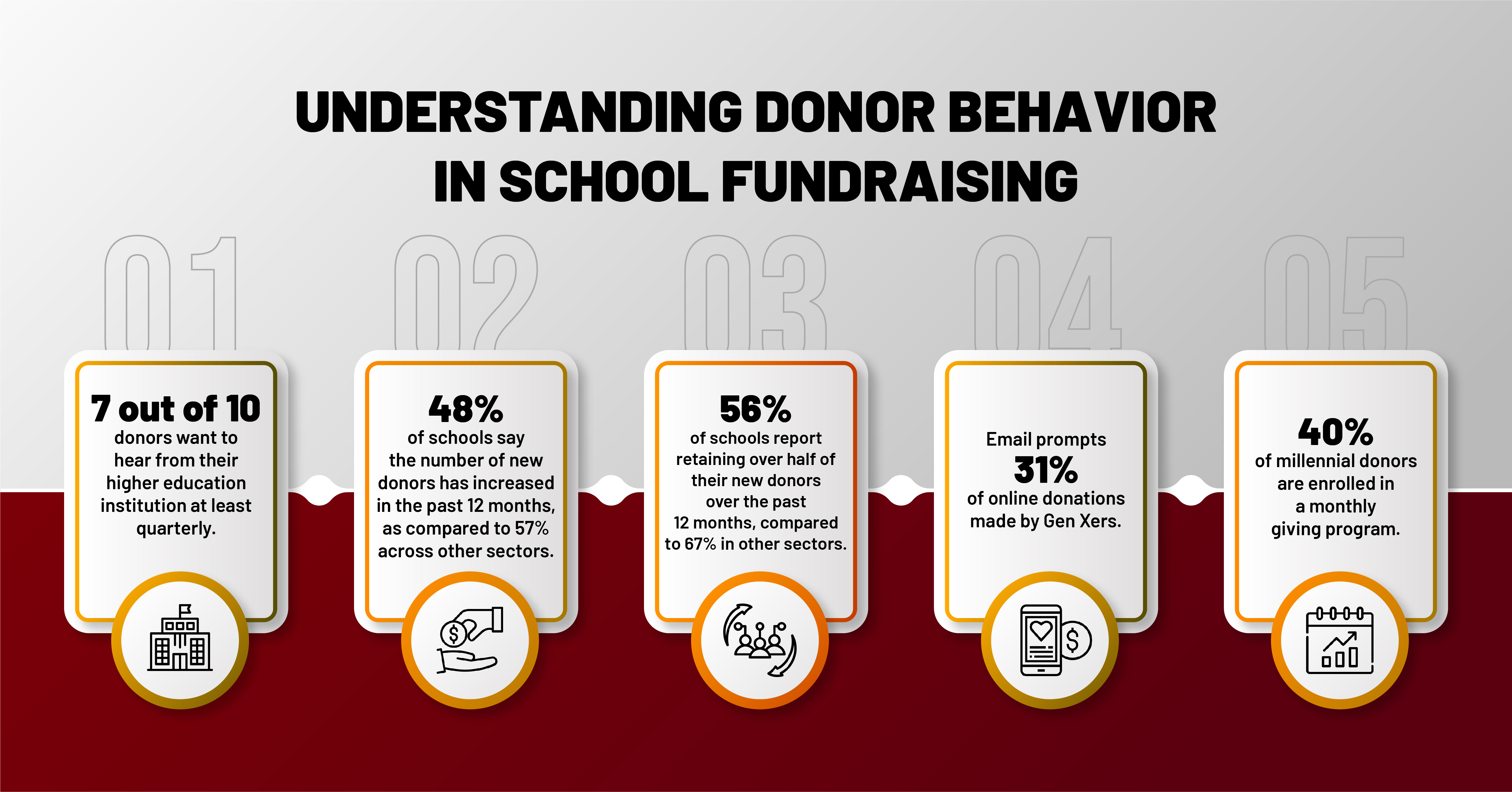
Blog Summary: This blog offers a comprehensive guide for school administrators, teachers, PTA members, and community stakeholders on how to set achievable SMART goals for school fundraisers. From understanding your resources and defining clear objectives to engaging the community and monitoring progress, learn how to approach your fundraising efforts with optimism and practicality. With success stories and practical tips, this blog will help you meet and exceed your fundraising expectations.
Fundraising is vital to school activities, significantly fulfilling financial needs and building a strong sense of community. The key to successful fundraising lies in setting realistic goals that align with the school's capabilities and aspirations. Studies have shown that schools that set achievable targets are more likely to engage their community and meet their financial objectives, positively impacting student experiences and educational outcomes.
Examining success stories from various schools shows that effective planning and realistic goal-setting lead to more successful fundraisers.
Understanding Your Resources
The cornerstone of school fundraising success is a realistic appraisal of available resources, which involves a detailed assessment of the volunteers, budget, and tools available to support the fundraiser.
- Volunteers: The backbone of any school fundraiser is its volunteers. Evaluating volunteers' numbers and commitment levels can help tailor the event to the available workforce. For instance, a significant event with a high volunteer turnout may be feasible. In contrast, a smaller, more manageable activity might be more suitable with fewer hands.
- Budget: It is crucial to understand the financial landscape, including the funds for organizing the event and the community's financial capacity. Setting a fundraising goal that reflects the economic realities of the school's community ensures that the targets are achievable and relatable.
- Tools: The tools and technology available can significantly influence the type and scale of the fundraiser. From online donation platforms to social media marketing, leveraging modern technology can expand reach and efficiency, opening up exciting possibilities for your fundraising efforts. However, it's essential to match the choice of tools with the skill level and access of the community to these technologies, ensuring that everyone can participate and contribute to the fundraiser's success.
Recognizing these limitations is not about scaling down ambitions but aligning goals with realistic expectations. This strategic alignment, guided by a thorough assessment and strategic use of resources, empowers schools to set objectives that are not only attainable but also impactful.
This approach ensures that every fundraiser concludes as a resounding success, leaving the audience feeling capable and confident in their ability to plan and execute successful fundraisers.
Defining Clear Objectives
When planning a school fundraiser, one of the most critical steps is defining clear, actionable objectives. The SMART goals framework provides a practical approach to setting these objectives. Here's how you can apply each element of SMART—Specific, Measurable, Achievable, Relevant, Time-bound—to your school's fundraising efforts:
- Specific: Clearly define what you want to achieve. Instead of a general goal like "raise funds," specify "raise $5,000 for new library books." This clarity helps focus efforts and rally support.
- Measurable: Attach a number to your goal to track progress easily. For example, if the goal is to fund a new playground, break it down into financial milestones ($2,000 for equipment, $1,000 for safety measures, etc.).
- Achievable: When setting goals, consider your school's capabilities. A small elementary school might target modest amounts from bake sales or fun runs. In contrast, a larger high school could aim for more considerable sums through auctions or gala events.
- Relevant: Ensure the goal matters to your community. If enhancing technology in classrooms is a priority for school improvement, a fundraiser for new computers will likely gain more traction than one unrelated to current needs.
- Time-bound: Set a clear deadline. A semester-long fundraising campaign for spring sports uniforms or a six-month drive for annual scholarships gives everyone a clear contribution timeframe.
For example, a medium-sized high school might aim to "raise $10,000 for student scholarships by the end of the academic year through community events and online donations," combining specificity with relevance and a measurable, achievable, time-sensitive target.
Implementing these principles ensures your fundraising goals are well-structured and more likely to succeed. It provides clear benchmarks for success and a focused direction for all participants.
Engaging the Community
A successful fundraiser thrives on robust community involvement. Engaging a wide array of community members boosts potential fundraising success and strengthens communal ties. Here are effective strategies and ideas to maximize community participation in your school's fundraising efforts:
- Engage Students: Involve students in the planning and executing of fundraising activities. For instance, organizing art shows or performances where students can showcase their talents encourages participation. It attracts their families and friends to the events.
- Involve Parents and Teachers: Parents and teachers can be ambassadors for your fundraising events. Please encourage them to spread the word and participate actively, perhaps by leading committees or volunteering during events.
- Partner with Local Businesses: Collaborate with local businesses for sponsorships or as venues for fundraising events. For example, a local restaurant could host a themed dinner night, and a portion of the evening's proceeds would go to your school.
- Community Activities: Organize community-centric events such as fun runs, bake sales, or charity matches, encouraging broad participation. Tailor each event to reflect the interests and capacities of your community, ensuring inclusivity.
- Leverage Social Media: Utilize platforms like Facebook, Instagram, and Twitter to create buzz around your events. Regular posts, event countdowns, and features on participants or goals can keep the momentum going and engage a larger audience.
By fostering a sense of ownership and participation among all stakeholders—students, parents, teachers, and local businesses—your school can significantly enhance the scope and impact of its fundraising efforts, creating lasting benefits for the school and its wider community.

Planning and Execution
Proper planning lays the foundation for a successful school fundraiser and streamlines the entire process, making it manageable and measurable. Here's how to effectively plan and execute your fundraising initiative:
Creating a Detailed Timeline:
- Initial Planning: Begin by setting a precise date for your event and work backward to establish critical milestones, including dates for vendor bookings, volunteer recruitments, and promotional launches.
- Checkpoints: Set regular checkpoints to review progress, ensuring that you promptly address any plan deviations and keep the fundraiser on track.
- Final Weeks: The weeks leading up to the event should focus on final preparations, such as confirming attendee numbers, finalizing logistics, and conducting a final marketing push.
Delegating Responsibilities:
- Committees: Divide the tasks into committees, such as logistics, finance, promotions, and volunteer management. Assign a leader for each who reports back to a central project manager.
- Clear Roles: Ensure everyone involved knows their responsibilities. Use shared documents or project management software to track who is doing what.
- Empowerment: Empower your team leaders to make decisions within their areas, which reduces bottlenecks and keeps the momentum going.
Utilizing Technology and Social Media:
- Event Management Tools: To simplify processes, use online tools like Cvent for ticketing or Google Forms for volunteer sign-up.
- Social Media: Leverage platforms like Facebook, Instagram, and Twitter to create buzz around your event. Regular updates, countdowns, and feature posts on volunteers or expected highlights can engage your audience.
- Digital Marketing: Consider targeted ads in your community and email newsletters to keep potential donors informed and engaged.
Adhering to these steps will ensure that your school's fundraiser planning and execution are structured and effective, leading to better outcomes and less stress for all involved.
Monitoring Progress and Adjusting Plans
Monitoring the progress of your fundraising efforts is crucial to ensure you are meeting your objectives and, if necessary, to make strategic adjustments. This continuous evaluation helps in maintaining transparency and keeping all stakeholders informed. Here's how to effectively track and adjust your fundraising plans:
Setting up Tracking Systems:
- Performance Metrics: Establish clear performance metrics (e.g., funds raised, tickets sold, number of participants) to define success.
- Regular Reviews: Schedule regular review meetings to assess progress against these metrics. These meetings could be weekly or bi-weekly, depending on the length of your campaign.
Using Feedback for Adjustments:
- Stakeholder Feedback: Regularly seek feedback from key stakeholders, including team members, volunteers, and participants. Use surveys or informal discussions to gather insights on what works and isn't.
- Adaptability: Use feedback and observed results to pivot your strategies. For instance, if a fundraising method isn't performing as expected, consider enhancing it or shifting focus to more productive tactics.
Maintaining Transparency and Communication:
- Transparent Reporting: Keep communication open with all stakeholders by sharing updates, successes, and challenges, which could be through regular emails, social media updates, or meetings.
- Inclusive Decision-Making: Involve various stakeholders in decision-making processes, significantly when significant changes to the plan are involved, which enhances trust and encourages broader support across the community.
Documenting the Process:
- Record Keeping: Maintain detailed records of all actions taken and their outcomes. This documentation will be invaluable for analyzing the effectiveness of different strategies and planning future events.
- Lessons Learned: Conduct a thorough review after the fundraiser to document lessons learned and recommendations for future fundraising efforts.
Through diligent monitoring and willingness to adapt, your fundraising campaign can maintain its course towards achieving its goals, ensuring immediate success and laying the groundwork for future endeavors.
In conclusion, the key to a successful school fundraiser lies in setting realistic goals that reflect your resources and community potential. You can ensure a positive outcome by understanding your limits, defining clear objectives, engaging the community, effectively planning and executing your strategies, and diligently monitoring and adjusting your plans. Approach your fundraising efforts with optimism and a practical mindset, and you will pave the way for immediate and long-term success.
FAQs
What are some signs that your fundraising goal might be unrealistic?
Signs include a lack of enthusiasm from the community, difficulty in meeting early milestones, or if past similar efforts have failed. Realistic goals resonate with potential supporters and feel achievable as you progress.
How can small schools with limited resources set practical fundraising goals?
Small schools should focus on community-centric events, leveraging local networks and businesses for support. Setting smaller, incremental goals that build towards a larger objective is also effective, making each step manageable and measurable.
What are the best ways to motivate volunteers during a school fundraiser?
Key strategies include publicly acknowledging volunteers' efforts, offering small rewards, and creating a fun, inclusive environment. Ensuring that volunteers understand the impact of their contributions can also boost motivation and commitment.
How frequently should fundraising progress be reviewed and communicated?
Fundraisers should schedule regular updates—at least bi-weekly or monthly. Frequent communication helps maintain momentum, allows for timely adjustments, and keeps everyone involved and informed about the progress.
What are common mistakes in school fundraiser planning, and how can they be avoided?
Common mistakes include setting vague goals, poor communication, and needing more contingency plans. Avoid these by using the SMART goal framework, maintaining clear, regular communication with your team, and planning for potential setbacks ahead of time.
Ready to transform your school's fundraising approach? Contact Big Fundraising Ideas for expert guidance and access your free fundraising kit today! Empower your school with the tools and support needed to meet your goals and enhance your educational programs.
Author Bio
Clay Boggess has been designing fundraising programs for schools and various nonprofit organizations throughout the US since 1999. He's helped administrators, teachers, and outside support entities such as PTAs and PTOs raise millions of dollars. Clay is an owner and partner at Big Fundraising Ideas.



